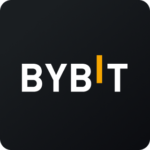

Blockchain technology, the first time hearing this combination of words sounded like something out of a Saw movie. It doesn't do anything scary, it's just a protective system where participants can exchange information safely, not being able to alter information sent into it. Blockchain sounds a bit like a futuristic concept, but actually, it's an amazing thing that has reshaped the way we interact with data, money, and even each other. Being closely tied to the crypto movement from different angles, I decided to write this guide to break down the principles of blockchain technology so you understand what kind of animal it is.
Essentially, blockchain technology is a decentralized, digital record book that records every transaction or information sent in the blockchain from participants in such a way that every transaction is registered and can not be altered. Might sound hard to digest, but think of it like a real book where every page, sentence, and word is data. Each page is linked to the next, forming a chain, and this chain is distributed digitally. The cool fact is that no one owns the book; participants of the network keep it running, and once a page (transaction) is added, it can’t be changed anymore – that is blockchain technology.
The purpose of blockchain technology is to provide a secure and transparent transaction recording avoiding any interactions with banks, government, etc. This digital trust infrastructure is widely used for transferring money, verifying documents or even healthcare. Blockchain ensures that all of the data in the network is real and secured. Blockchain technology builds trust in a trustless environment, that's why sectors like finance and banking, government, cybersecurity, and even agriculture are starting to use this technology more widely.
Looking into the technology deeper, we see that blockchain is a mix of three technologies that work together to create a secure and decentralized system:
Together, these three technologies form the backbone of blockchain, allowing it to function as a decentralized, secure, and transparent network for digital transactions.

Decentralization is the main thing that makes blockchain so attractive. A decentralized system is a system that is not controlled by banks, governments, or any single entity. Instead, power and control are distributed across a network of nodes. Nodes are network stakeholders and their devices are authorized to keep track of the blockchain records and serve as communication hubs for various network tasks. A Blockchain node's primary job is to confirm the legality of each subsequent batch of network transactions, known as blocks.
In a decentralized blockchain network, each node, which literally is a computer connected to the network, has a copy of the entire blockchain. When a transaction is initiated, it is broadcasted to all nodes from where their task is to validate the transaction through a certain mechanism. Once the transaction is validated, It's added to the blockchain. Magic layers in the power of distribution that ensure no single entity can control or alter the blockchain, making it super secure and resistant to fraud.
Created this table to stack up decentralized and centralized systems to better visualize how they compare:
Feature | Decentralized Systems (e.g., Blockchain) | Centralized Systems |
|---|---|---|
Control | Distributed across multiple nodes | Controlled by a single authority |
Security | High, due to the distributed nature | Lower, single point of failure |
Transparency | High, all transactions are public | Varies, often less transparent |
Speed | Slower, requires consensus | Faster, direct processing |
Cost | Lower transaction costs | Higher costs due to intermediaries |
Decentralized systems like blockchain offer incomparable advantages in terms of security and transparency, but compared to centralized systems they can sometimes be slower and way more complex to manage.
Here is the breakdown of the process of how blockchain technology works:
Essentially blockchain is a chain of blocks, to make the reading and sorting of them easy, each block contains:
This structure ensures that each block is securely linked to the previous one, creating an unbreakable and secure chain of data.
To validate any transactions in the blockchain, nodes have to follow specific consensus mechanisms, like protocols, to add the transaction to the chain, avoiding mistakes. The most common mechanisms are:
These validation mechanisms ensure that all participants (Nodes) in the network agree on the state of the blockchain, maintaining its integrity and security.
A smart contract is the backbone for DeFi (Decentralized Finance), mostly used on the Ethereum blockchain. They are self-executing contracts, that run on the blockchain, allowing transactions and agreements to be executed automatically when certain agreement conditions are met. This new innovation eliminates the need for intermediaries, increasing efficiency and opening up a new world of finance where people can lend cryptocurrencies and sell digital items like NFTs or real estate.
I believe security is an important thing for all of us, especially since privacy is a sensitive thing. Luckily safety and privacy are the key features of blockchain. Blockchain technology ensures that each block in the chain is cryptographically linked to the previous block, making it impossible to alter any data without breaking the entire chain. Additionally, the decentralized nature of blockchain means there’s no single point of failure, making it highly resistant to attacks and fraud.

Various industries are already using blockchain technologies, but there are different types of them suiting every use case:
The peer-to-peer digital network is being applied across various industries, showcasing its versatility and reliability:
Blockchain technology is the foundation on which cryptocurrencies like Bitcoin, Ethereum, and hundreds of other cryptocurrencies are built. Crypto is a digital asset that is secured by the decentralized data platform, not like fiat currency (USD, GBP, EUR) which is secured and controlled by the banks. Blockchain technology ensures that every transaction involving a cryptocurrency is correctly recorded on a blockchain giving its users absolute security and privacy.
I see that the banking sector is the one that is and will benefit the most from blockchain technology. With faster cross-border payments, higher security, and transparency banks will increase their competitive edge by attracting more business opportunities:
The potential for blockchain technology extends far beyond just crypto transactions and banking improvements. Here are some of the key areas where this digital trust infrastructure is and will become a big thing:
Blockchain is revolutionizing money transfers by making them faster, cheaper, and more secure, especially for cross-border transactions.
In healthcare, blockchain is used to secure patient data management, streamline insurance claims, and improve drug traceability.
NFTs, powered by blockchain, have taken the digital world by storm, allowing the creation, buying, and selling of unique digital assets like art and collectibles.
Blockchain enhances IoT by providing a secure, decentralized platform for device communication, data sharing, and automation.
In the gambling industry, blockchain ensures fairness, transparency, and security in online gaming and crypto betting.
Smart contracts are applied across various industries, automating processes like legal agreements, supply chain management, and financial transactions.
Blockchain improves logistics and supply chain management by providing real-time tracking, reducing fraud, and increasing efficiency.
In real estate, blockchain is transforming property transactions, including sales, leasing, and title management, by enhancing transparency and reducing fraud.
The insurance industry is leveraging blockchain for smart contracts, policy management, claims processing, and fraud detection.
Blockchain is being used in the media industry to manage digital rights, combat piracy, and ensure fair compensation for content creators.

There are numerous benefits of using this transparent transaction framework, but want to highlight the main ones:
Despite its many benefits, this digital trust infrastructure does have some challenges you have to be aware of:
Looking ahead and reading the latest crypto news, I see that blockchain technology has the potential to transform not just the financial sector but almost every industry where security, transparency, and speed are important. Decentralized finance is already used to secure sensitive information such as healthcare data; it's a statement-making wave by itself. Blockchain technology has made a statement: it is here to stay, and sooner or later, it will affect all of us.
Blockchain technology is a decentralized digital ledger, like a digital record book that records transactions across multiple computers. It works by creating a chain of blocks, each containing a list of information, which network participants, known as nodes, then validate through consensus mechanisms. When information is validated, it is added to the chain.
The main purpose of blockchain technology is to provide a secure, transparent, and tamper-proof platform for recording transactions and data, eliminating the need for intermediaries, like banks, governments, etc. at the same time enabling trust for a decentralized environment.
The underlying technology for blockchain is cryptography, distributed ledger technology, and peer-to-peer networks. These three technologies work hand in hand ensuring security, transparency, and decentralization.
Cryptocurrency is working on blockchain, it is the core technology that records and verifies all transactions sent in the chain. Additionally, blockchain ensures that every transaction is secure, transparent, and immutable.
Blockchain technology is the backbone for cryptocurrencies, providing the secure and decentralized infrastructure necessary for cryptocurrency creation, transfer, and storage.
A hash is a cryptographic function that converts data into a fixed-length string of characters. It is used in blockchain, where hashes secure each block, linking it to the previous block and ensuring the integrity of the entire chain.
Blockchain technology is all about allowing to share data securely and transparently across the network. Each network participant has access to the same data, ensuring consistency and trust while minimizing fraud risk.
Blockchain gives advantages regarding security, transparency, and efficiency by eliminating any intermediaries and providing a tamper-proof record of transactions. It is also cost-effective and increases user trust in digital interactions.
Blockchain uses cryptography to protect the identities of users by using pseudonymous addresses, ensuring that users' personal information is not publicly disclosed.
Blockchain is important because it represents not only cryptocurrency transactions but a new way of recording and sharing data that are secure and transparent. It has the potential to transform industries, from finance to healthcare, and a lot of companies are already using blockchain technology to protect internal data.
